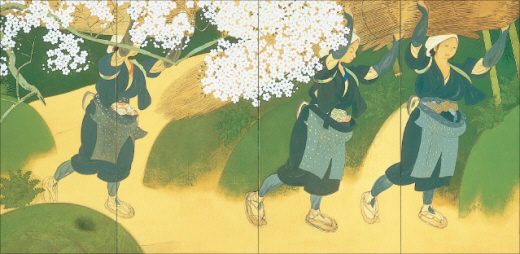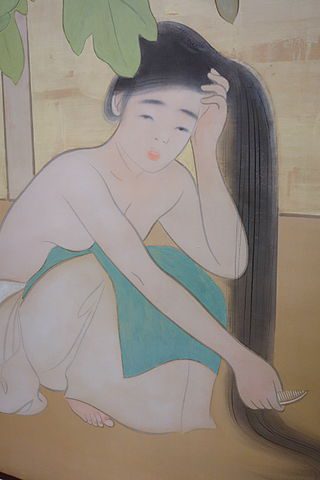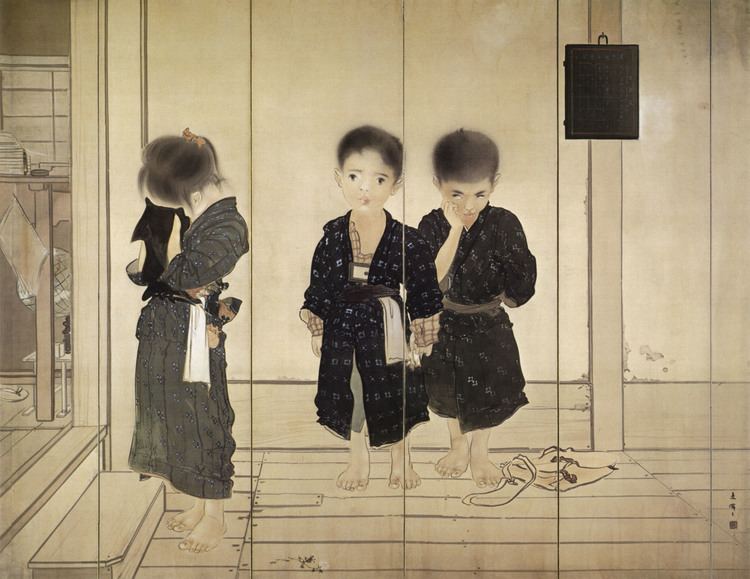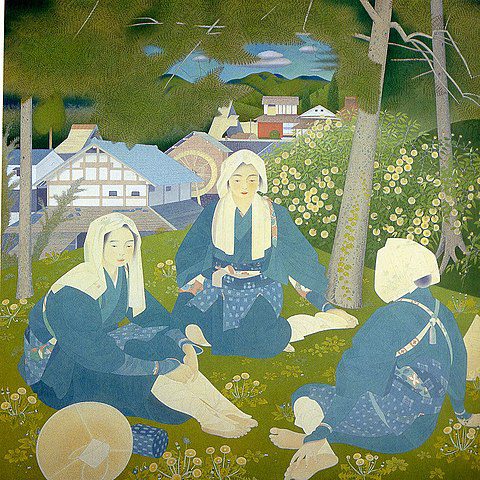Japan art and Tsuchida Bakusen: Sado Island and Nichiren
Lee Jay Walker
Modern Tokyo Times

The Japanese artist Tsuchida Bakusen (1887-1936) was known for Nihonga style art. Hence, despite his father wanting him to be a Buddhist monk, he chose the art world. Therefore, the art world was lucky he chose this path because he created many stunning art pieces.
He was born on Sado Island. Ironically, this island is also connected strongly with Japanese Buddhism in many ways. This notably concerns the revered Nichiren (1222-1282), who was exiled to this island because of his outspoken views.

Bakusen will have been told about the exile of Nichiren to Sado Island as a child. Hence, the Buddhist temples on this stunning island – irrespective of the sect – have a strong connection to this holy Buddhist cleric of high esteem.
Turning back to Bakusen, the Adachi Museum says, “He studied under Takeuchi Seiho after studying at Suzuki Shonen’s organization. After entering the Kyoto City Specialist School of Painting (Kyoto City Kaiga Sen-mon Gakko) in 1909, he began focusing on Western modern art. He sought for free expression of characteristics, and developed an avant-garde art movement. In 1918, he participated in establishing the Association for the Creation of New Japanese-style Painting (Kokuga Sosaku Kyokai). He pursued the harmony between Western paintings and Japanese decoration. In his later years, he created works that offer intelligent aesthetics and warm interiority.”

After his travel to Europe in the early 1920s, Bakusen’s passion for French Impressionism and post-Impressionism increased dramatically. It is known that he adored the art of Paul Cezanne, Paul Gauguin, and Vincent van Gogh.
Nichiren
Nichiren was very independent because he believed firmly that the true path lay within his teachings -concerning his knowledge of the written word. This holy Buddhist cleric made many enemies because he was outspoken and condemned other Buddhist schools of thought. However, for Nichiren, it was his passion for searching for the truth, challenging authority when required, and questioning concepts he deemed to be false.

Nichiren said, “Worthy persons deserve to be called so because they are not carried away by the eight winds: prosperity, decline, disgrace, honor, praise, censure, suffering, and pleasure. They are neither elated by prosperity nor grieved by decline. The heavenly gods will surely protect one who is unbending before the eight winds.”
Bakusen passed away from this world in 1936. However, his art still appeals greatly in modern Japan.

PLEASE SUPPORT MODERN TOKYO TIMES by DONATING
Modern Tokyo News is part of the Modern Tokyo Times group
DONATIONS to SUPPORT MODERN TOKYO TIMES – please pay PayPal and DONATE to sawakoart@gmail.com
http://moderntokyotimes.com Modern Tokyo Times – International News and Japan News
https://www.pinterest.co.uk/moderntokyotimes/ Modern Tokyo Times is now on PINTEREST
http://sawakoart.com – Sawako Utsumi personal website and Modern Tokyo Times artist
https://moderntokyonews.com Modern Tokyo News – Tokyo News and International News
PLEASE JOIN ON TWITTER
https://twitter.com/MTT_News Modern Tokyo Times